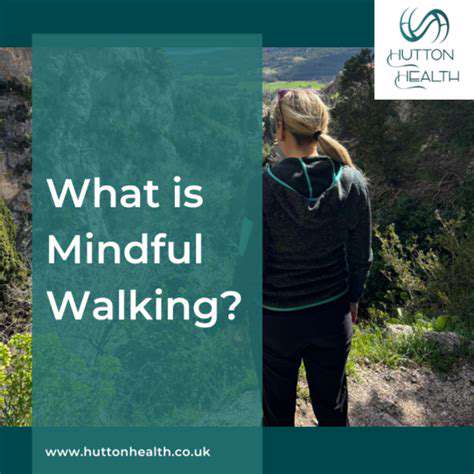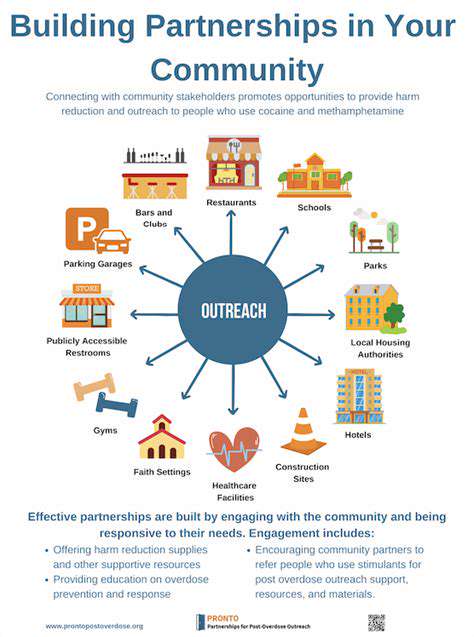The Power of Mindful Walking for Stress Relief
When we're caught up in a to-do list, our focus is almost entirely on the future. We're planning, strategizing, and worrying about what's to come. Mindful walking helps us shift this focus to the present experience. Instead of rushing through our daily routine, we begin to savor the journey. It's about appreciating the simple act of walking, the sensation of movement, the beauty of your surroundings.
This shift in perspective is fundamental to cultivating a sense of calm and well-being. By allowing yourself to fully experience the present moment, you begin to detach from the anxieties and pressures that often accompany a future-oriented mindset. The experience becomes the focus, not just the destination. You are no longer just getting from point A to point B, but enjoying the path itself.
The Physical Benefits of Mindful Walking
Beyond the mental benefits, mindful walking also offers substantial physical advantages. The act of walking itself is a form of exercise, promoting cardiovascular health and reducing stress hormones. However, the mindful aspect elevates the experience. Consciously engaging with your body and breath as you walk strengthens your connection to your physical self, promoting a deeper sense of awareness and well-being.
By tuning into your body's sensations during a walk, you can gain a clearer understanding of your physical needs. You may notice tension in your shoulders or tightness in your hips. These physical cues, when acknowledged, can lead to a greater understanding of your body's overall health and well-being. Mindful walking is a powerful tool for promoting both physical and mental health.
Integrating Mindful Walking into Your Routine
Incorporating mindful walking into your daily routine doesn't require significant time commitments or elaborate preparations. Start by setting aside just 10-15 minutes each day to walk mindfully. Choose a familiar route or a new path in your neighborhood. As you walk, bring your attention to the sensations of your body, the sights, sounds, and smells around you. Be present in the experience without judgment or expectations.
Over time, you'll find that these moments of mindful walking become increasingly valuable in managing stress, improving focus, and fostering a deeper connection to the present moment. This practice can be integrated into existing routines, like a morning walk, a lunch break stroll, or an evening walk home from work. Consistency is key, and the benefits will gradually become more apparent as you embrace this powerful practice.
Grounding Techniques for Stress Reduction Through Walking
Mindful Walking as a Stress Reducer
Mindful walking, a practice that combines the physical act of walking with a focused awareness of the present moment, can be a powerful tool for stress reduction. By shifting your attention to the sensations in your body—the feel of your feet on the ground, the rhythm of your breath, the movement of your limbs—you create a space between yourself and the stressful thoughts and anxieties that often plague us. This mindful engagement with the present moment helps to interrupt the cycle of stress response, allowing your body and mind to relax and restore balance.
It's not about achieving a perfect walk or a specific outcome. It's about the process of paying attention to the experience itself. This focused attention, combined with the physical activity of walking, can create a powerful antidote to stress and promote a sense of calm and well-being.
Connecting with Your Body During a Walk
A key aspect of mindful walking is the connection you forge with your body. Notice the subtle sensations in your feet as you step, the way your muscles engage and release with each stride, and the rhythm of your breath flowing in and out. This heightened awareness can help you tune into your body's natural responses to stress, allowing you to identify early warning signs and implement strategies to manage them effectively. By truly feeling your body, you become more attuned to its signals and can better understand your emotional state.
Cultivating this body awareness during a walk allows you to appreciate the present moment, disconnecting from the worries of the past and anxieties about the future. This creates a sense of grounding and stability, essential for reducing stress and promoting emotional regulation.
Selecting a Suitable Walking Environment
The environment you choose for your mindful walk can significantly impact your experience. A quiet park, a serene trail in nature, or even a peaceful section of a sidewalk can all create an atmosphere conducive to mindfulness. Find a place that resonates with you and allows you to fully immerse yourself in the present moment. Avoid distractions like loud noises, busy crowds, or electronic devices. The goal is to create a space where you can focus on your walk and your inner experience.
Incorporating Mindfulness Practices into Your Walk
Beyond simply paying attention to your body, incorporating other mindfulness practices into your walking routine can further enhance its effectiveness. Notice the colors and textures around you, observing the details of the environment. Pay attention to the sounds you hear, from the rustling leaves to the chirping birds. Engage all your senses to fully immerse yourself in the present moment. This heightened awareness of your surroundings can be incredibly grounding and help to shift your focus away from stressful thoughts.
Incorporating deep, conscious breaths as you walk further enhances the experience. Each breath can be a moment of connection to the present, anchoring you in the here and now. Try focusing on the sensation of the air entering and leaving your body, using your breath to regulate your emotional state.
Integrating Mindful Walking into Your Daily Routine

Benefits of Mindful Walking
Mindful walking, a practice that involves paying close attention to the physical sensations of walking, offers a multitude of benefits for both physical and mental well-being. It allows you to connect with the present moment, reducing stress and anxiety, and fostering a deeper appreciation for the environment around you. This mindful engagement can help improve focus and concentration, making it a valuable tool for managing daily stressors.
By cultivating awareness during your walks, you can also experience a heightened sense of presence and connection to your body. This heightened awareness can lead to a more positive outlook and a greater appreciation for the simple act of walking.
Techniques for Mindful Walking
There are several techniques you can use to integrate mindful walking into your routine. One key aspect is to simply focus on the physical sensations of your feet hitting the ground, the feeling of your body moving, and the rhythm of your breath. Observe the sights, sounds, and smells around you without judgment. Notice the textures of the ground beneath your feet and the way the air feels against your skin.
Another technique involves consciously shifting your attention to the present moment. Let go of any thoughts that may be wandering, and gently redirect your focus back to your surroundings and the feeling of walking.
Mindful Walking and Stress Reduction
Mindful walking can be a powerful tool for stress reduction. The act of focusing on the present moment, rather than dwelling on worries or anxieties, helps to calm the mind and body. This mindful engagement with the present moment can help to reduce the physiological responses associated with stress, such as increased heart rate and muscle tension.
Regular practice of mindful walking can lead to a noticeable decrease in stress levels and an increased sense of calm and well-being. Furthermore, it can help you develop coping mechanisms for managing stressful situations in your daily life.
Incorporating Mindful Walking into Your Day
Integrating mindful walking into your daily routine is easier than you might think. You can incorporate it into your commute, lunch break, or even a quick walk around your neighborhood. It doesn't require a lot of time or special equipment. Simply set aside a few minutes each day to focus on the present moment and the physical sensations of walking.
Start with short, 5-10 minute walks and gradually increase the duration as you become more comfortable with the practice. Find a quiet and peaceful place where you can focus on your breath and the sensations of walking without distractions.
Mindful Walking and Physical Health
Beyond its mental benefits, mindful walking also contributes positively to your physical health. The gentle movement improves circulation, strengthens your muscles, and can help maintain a healthy weight. It can be a fantastic low-impact exercise for people of all fitness levels.
Consistent mindful walking can increase your energy levels and contribute to a greater sense of overall well-being. It also promotes a more active lifestyle, which is essential for maintaining good physical health.










